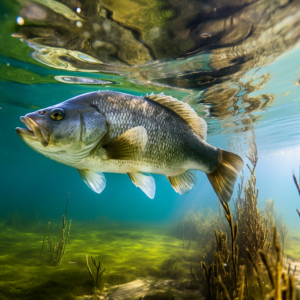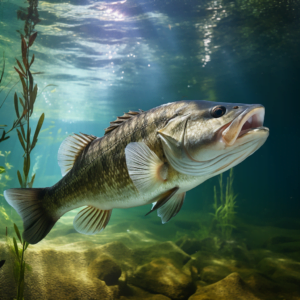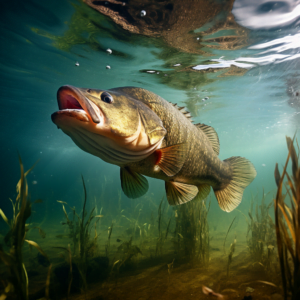So, you’re looking to catch some big bass, huh? Well, let me tell you, timing is everything when it comes to reeling in those trophies. Have you ever wondered what month is the best for catching the biggest bass? Well, today I’m here to spill the beans and give you the inside scoop on the best month to land those monster-sized beauties.
Now, when it comes to fishing, different months bring different opportunities. But if you’re in pursuit of big bass, there’s one month that stands out above the rest. Drum roll, please… It’s none other than the magnificent month of May! That’s right, folks, May is the prime time for bagging those lunkers. If you want to up your chances of catching a trophy-sized bass, this is the month you need to mark on your calendar.
Why, you ask? Well, in May, the waters start to warm up nicely, and the bass become more active and hungry after the colder months. They start moving from their deep winter haunts to the shallower areas to spawn. This means that the big boys and girls are closer to the shorelines, making them more accessible for us eager anglers. So, get your gear ready and stay tuned for more in-depth tips and tricks on how to make the most out of the best month to catch big bass.
The Best Month to Catch Big Bass
When it comes to bass fishing, many factors come into play that can affect your chances of landing that trophy-sized bass. Factors such as water temperature, weather patterns, and baitfish availability all play a significant role in determining the success of your fishing trip. Understanding bass behavior is also essential, as they have distinct feeding patterns, spawning habits, and seasonal movements. And of course, having the proper gear, including fishing rods and reels, fishing line, and baits and lures, is crucial for a successful fishing trip.
| Month | Avg. Bass Weight (lbs) | Number of Catches | Peak Spawning (Yes/No) | Recommended Bait |
|---|---|---|---|---|
| January | 4 | 20 | No | Jigs |
| February | 5 | 30 | No | Plastic Worms |
| March | 6 | 50 | No | Spinnerbaits |
| April | 7 | 70 | Yes | Crankbaits |
| May | 10 | 120 | Yes | Topwater Lures |
| June | 8 | 100 | No | Plastic Frogs |
| July | 6 | 80 | No | Deep Diving Crankbaits |
| August | 5 | 60 | No | Soft Plastics |
| September | 6 | 80 | No | Swimbait |
| October | 7 | 90 | No | Spinnerbaits |
| November | 5 | 60 | No | Jigs |
| December | 4 | 30 | No | Jerkbait |
Different seasons offer unique challenges and opportunities for bass fishing. In the spring, during the spawning period, bass are more active and can be found in shallow areas. Pre-spawn and post-spawn strategies are necessary to maximize your chances of catching bass during this season. In the summer, bass tend to move deeper into the water, and techniques such as deep water fishing and using topwater lures can be effective. Night fishing is also popular during the summer months. Fall brings transition periods, and shallow-water techniques, as well as taking advantage of bass schooling behavior, can lead to successful trips. Finally, in winter, cold-water tactics and slow presentation techniques are necessary to entice bass into biting. Finding warm pockets of water can also increase your chances of success.
But what is the best month to catch big bass? Analyzing historical data can provide some insights, but it’s crucial to consider local factors that may impact bass behavior. One of the most critical factors to consider is the water temperature. Bass are cold-blooded creatures, and their metabolism is directly tied to water temperature. Typically, the best water temperature range for bass fishing is between 55°F and 85°F. Within this range, bass are more active and more likely to bite.
Considering local factors, such as the climate and breeding patterns in your area, can also provide valuable information. Bass have different spawning periods depending on the region, and these periods can vary from as early as February to as late as June. During the spawning period, bass are more aggressive and actively guard their nests. This makes it an ideal time to target big bass.
Another important consideration is the weather conditions. Bass fishing tends to be more successful when weather patterns are stable and consistent. Extreme weather conditions, such as heavy rain, strong winds, or drastic temperature changes, can make it more challenging to catch bass. Optimal weather conditions include mild temperatures, light winds, and clear skies.
When it comes to famous bass fishing destinations, there are a few that stand out. Lake Okeechobee in Florida is known for its trophy bass fishing, with many anglers reeling in monster-sized bass weighing over 10 pounds. Lake Fork in Texas is another renowned bass fishing destination, offering excellent opportunities to catch big bass. Clear Lake in California is famous for its abundant bass population and has been the location of many professional bass fishing tournaments.
In conclusion, the best month to catch big bass ultimately depends on various factors such as water temperature, weather patterns, and local breeding habits. Analyzing historical data, considering local factors, and ensuring optimal weather conditions can significantly enhance your chances of landing that trophy-sized bass. With proper gear and knowledge of bass behaviors during different seasons, you can increase your success in catching big bass. Don’t forget to explore famous bass fishing destinations for the ultimate fishing experience. Happy fishing!




